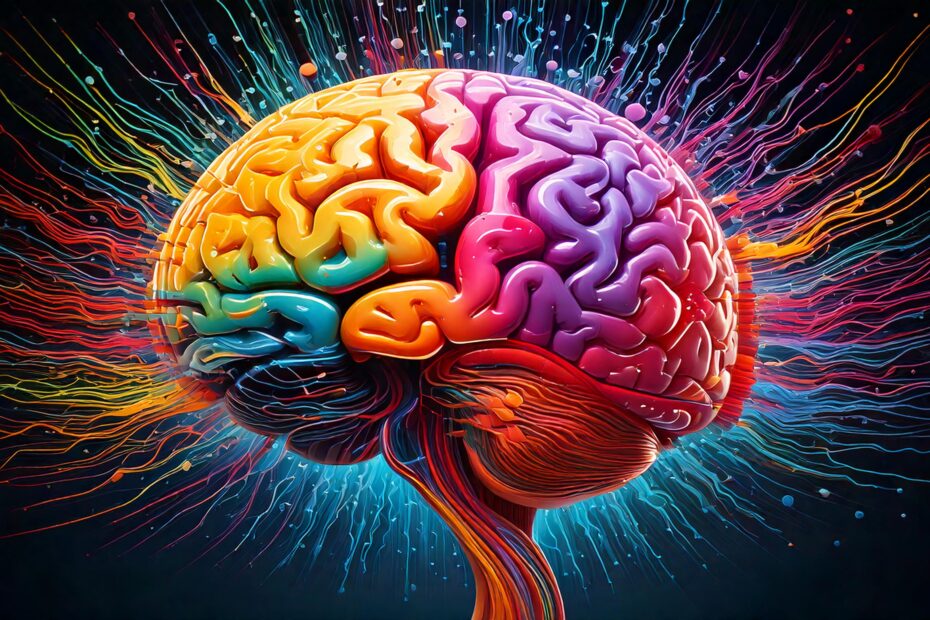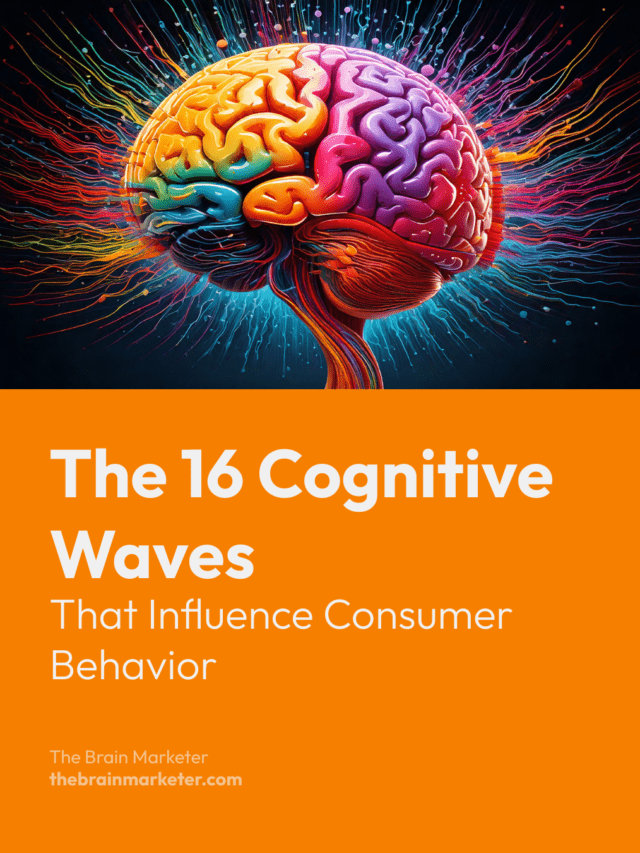Introduction
Our brains continuously process a multitude of stimuli, emotions, and thoughts, shaping our perceptions and interactions with the world. In marketing, understanding these cognitive waves—the mental processes influencing decision-making—offers valuable insights into designing campaigns that resonate with consumers. This article explores 16 cognitive waves that impact consumer behavior, from emotional memories to self-esteem and reward mechanisms.
🎙️ Unpack the Topic with this Podcast
What Are Cognitive Waves?
Cognitive waves are the mental rhythms and patterns that govern how the brain processes information. Unlike cognitive biases, which are shortcuts in decision-making, cognitive waves focus on how we perceive, think, and respond over time.
Marketers who understand these waves can create campaigns that resonate with consumers, leveraging the natural flow of attention, memory, and emotional engagement.
The 16 Cognitive Waves
1. Emotional Memory (Emo Mnesic)
Emotional memories significantly influence current decisions. Brands that evoke positive emotional memories can create nostalgia or familiarity, encouraging purchases.
Example: Coca-Cola’s holiday campaigns often rekindle warm, festive memories, fostering a sense of tradition and prompting repeat purchases.
Action Tip: Incorporate elements in your marketing that trigger positive past experiences to build a deeper connection with consumers.
2. Call to Action
Effective calls to action (CTAs) prompt immediate consumer responses, driving engagement or purchases.
Example: Amazon’s “Buy Now” button simplifies the purchasing process, encouraging quick decisions.
Action Tip: Craft clear, compelling CTAs that guide consumers toward desired actions, enhancing conversion rates.
3. Music
Music profoundly affects mood and emotional states. The right soundtrack in marketing can evoke specific emotions, enhancing consumer experience and ad memorability.
Example: Apple and Google use of upbeat, modern music in ads aligns with its innovative brand image, creating an engaging atmosphere.
Action Tip: Select music that reflects your brand’s personality and resonates with your target audience to strengthen emotional connections.
4. Positive Emotional Balance (Cost/Benefits)
Consumers assess the emotional benefits of a purchase against its costs, seeking rewarding and worthwhile decisions.
Example: Starbucks and McDonald’s ambiance and personalized service add emotional value, justifying premium pricing.
Action Tip: Highlight the emotional rewards of your product to outweigh perceived costs, enhancing appeal.
5. Vision & Attention
Visual stimuli capture consumer attention. Eye-catching ads and well-designed visuals enhance engagement and brand recall.
Example: Nike’s bold, minimalist ads focus attention on key messages and products.
Action Tip: Use striking visuals and clear design to draw attention and communicate your brand effectively.
6. Positive Emotions
Marketing that evokes positive emotions like happiness or comfort fosters lasting consumer connections and loyalty.
Example: Disney’s storytelling evokes joy and wonder, creating strong emotional bonds with audiences.
Action Tip: Create content that elicits positive emotions to build deeper relationships with consumers.
7. Reward & Dependency
Activating the brain’s reward centers through products or services can lead to pleasure and encourage repeat purchases.
Example: Social media platforms use notifications to trigger dopamine releases, increasing user engagement.
Action Tip: Incorporate rewarding experiences in your offerings to foster consumer loyalty.
8. Seduction
Appealing to consumers’ desires creates an irresistible attraction to a product or brand.
Example: Luxury brands like Chanel use seductive imagery to appeal to aspirational desires.
Action Tip: Highlight the desirability and exclusivity of your product to entice consumers.
9. Dynamism
Energetic, fast-paced stimuli engage the brain, capturing attention and creating excitement around a brand.
Example: Red Bull’s action-packed content aligns with its dynamic brand image.
Action Tip: Incorporate dynamic elements in your marketing to energize and engage your audience.
10. Self-Esteem
Marketing that enhances self-esteem makes consumers more likely to engage and form positive brand associations.
Example: Dove’s “Real Beauty” campaign promotes self-acceptance, boosting consumer self-esteem.
Action Tip: Develop campaigns that empower consumers, fostering positive self-perception.
11. Declarative Preferences
Consciously stated preferences, shaped by experiences and values, influence brand choices.
Example: Eco-conscious consumers prefer brands like Patagonia, known for environmental responsibility.
Action Tip: Align your brand with the values and preferences of your target audience to strengthen connections.
12. Voice Processing
The tone and quality of voice in ads or customer interactions affect brand perception and consumer experience.
Example: Calm’s soothing voiceovers enhance the app’s relaxing appeal.
Action Tip: Use voice elements that reflect your brand’s identity and resonate with your audience.
13. Empathy
Demonstrating empathy for consumers’ needs or challenges fosters strong emotional bonds.
Example: Always’ “Like a Girl” campaign empathizes with young girls’ struggles, building connection.
Action Tip: Create content that shows understanding and support for your audience’s experiences.
14. Mental Imagery
Storytelling and vivid descriptions enable consumers to visualize using a product, enhancing engagement.
Example: Airbnb’s user-generated content helps potential customers imagine their own stays.
Action Tip: Use descriptive language and imagery to help consumers envision positive experiences with your product.
15. Error Detection & Negative Thoughts
Consumers avoid products that trigger negative thoughts or seem risky. Addressing potential concerns upfront is crucial.
Example: Zappos’ free return policy alleviates purchase anxiety, encouraging buying.
Action Tip: Proactively address consumer concerns to build trust and reduce perceived risks.
16. Detection of Negative Thoughts
Closely related to the previous wave, this involves the recognition of negative thoughts. When consumers feel uncertain or anxious about a product, their decision-making process may be disrupted, so it’s essential for brands to alleviate these concerns through transparency and trust-building.
Conclusion
The human brain processes a complex mix of emotions, thoughts, and stimuli—all of which influence consumer behavior. By understanding these 16 cognitive waves, marketers can craft more effective campaigns that resonate on a deeper, more emotional level. Whether it’s through activating positive emotions, creating mental imagery, or tapping into the brain’s reward system, these waves offer a roadmap for influencing consumer decisions.

Vincent Heimann is a marketing project manager and neuromarketing enthusiast. He founded The Brain Marketer to bridge neuroscience and marketing through accessible, science-based content. With over 10 years of experience in digital strategy, UX/UI and communication, he shares practical insights to help brands connect with the human brain — ethically and effectively

